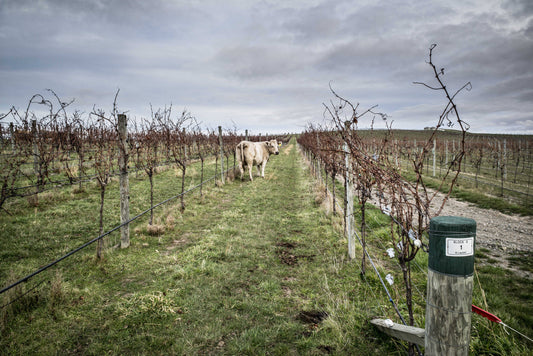| Steven Spurrier makes some lucky finds in his cellar at home
Hugh Johnson was of the opinion, when all wines worth cellaring were sold in 12 bottle cases, that one opened the first three bottles before they were at their best while appreciating the potential, the next six around their plateau which could be a decade or more, and the last three on their decline but remembering how good they had been. The enforced period of lockdown which now finds me fortunate to be in Dorset with my wife, while our children and grandchildren are holed up in London, has allowed me to open some interesting bottles.
My cellar is 90% European, this being around 70% French, and while the choice here is large, I decided to go ‘off piste’, opening wines that had been forgotten for years. First up were the last of three 2001s from the Douro – made early-on in the venture of table wines away from port. The Prats-Symington ‘Chryseia’ – only its second vintage – showed good fruit with Médoc-like firmness on the finish; Dirk Niepoort’s ‘Redoma’ was still full of briary energy; Quinta do Vale Meão combined richness, spice and smoothness, my favourite of the three.
Informed that Carlos Falcó, Marqués de Griñón, had died from the coronavirus aged 83, I decided to open a 2000 Syrah from his Dominio de Valdepusa estate near Toledo, still full of velvety vigour. Carlos Falco was the founder of the ‘Pagos’ single estate vineyards that brought justified attention to wines of northern Spain.
My Spanish wine rack reminded me of several old vintages of Rioja Gran Reserva from Marqués de Cáceres, so on alternate evenings I opened (all these wines were decanted) the 1998 and 1991. The ruby red colour of the former led to wonderful Tempranillo flavours, years in American oak beautifully blended in, while the latter showed fine textural fruit, a classic Rioja in all its mature glory.
Next came Hungary, from Domaine Mondivin in Villány, co-founded by my Académie Internationale du Vin colleague Belgian wine merchant Eric Sauter. Recognized early-on by Michael Broadbent, who pointed out that ‘the southern wine district of Villány is the natural home of Cabernet Franc’, Villány-Cabernet Franc now has its own appellation and is the most highly regarded red wine in Hungary. Eric had left several bottles with me at the end of the AIV’s visit to English vineyards five years ago and I went first for the 2000, a superbly elegant expression of the grape with not a hint of exaggeration, then the 1996, the Domaine’s third vintage but from 35-year old vines, still youthful and claret-like in its fragrance, full of elegance and southern warmth. Sadly, according to Eric, such wines can’t find a market, and in 2019 none were made, the grapes being sold to Gere, Villány’s most successful producer alongside Bock and Malatinszky.
Of course, France could not be ignored, and last bottles of 2006 Chassagne-Montrachet 1er Cru Les Champgains F&L Pillot, 2005 Chassagne-Montrachet Les Chaumes Vieilles Vignes V&F Jouard and 1995 Chassagne-Montrachet Vieilles Vignes Bernard Morey were past their prime, reminding me how good they had been a few years earlier. | 


